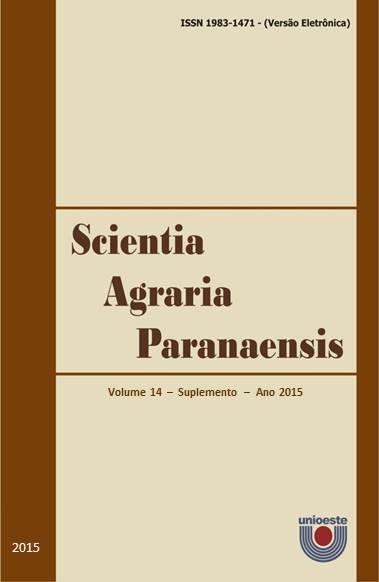Alternative control of Meloidogyne incognita in soybean
DOI:
https://doi.org/10.18188/sap.v14i0.13317Keywords:
Glycine max, nematoide de galhas, fungos nematófagos, Pochonia chlamydosporia.Abstract
The alternative control is an environmentally safe and ecologically viable option for controlling plant pathogens. Considering the great importance of nematodes in soybean, this study aimed to evaluate the efficacy of nematophagous fungi against the root-knot nematode Meloidogyne incognita in soybean. The experimental design was in randomized blocks, with five treatments and four replicates. The treatments were Pochonia chlamydosporia, Paecilomyces lilacinus, Coprinus comatus, a mixture of P. chlamydosporia and P. lilacinus, and control plants inoculated with M. incognita and without treatment. We evaluated number of eggs and second stage juveniles (J2) in soil and roots, number of galls and reproduction factor (RF). There were no differences among the treatments and the control plants for number of eggs and J2 in soil and roots, number of galls and RF. The P. chlamydosporia treatments caused the reduction of the number of J2 in roots. Thus, was possible to conclude that P. chlamydosporia has potential to control M. incognita in soybean plants.Downloads
Published
15-12-2015
How to Cite
HAHN, M. H.; KUHN, O. J.; STANGARLIN, J. R.; GONÇALVES, E. D. V.; CRUZ, M. I. F. da; HENKEMEIER, N. P.; DILDEY, O. D. F. Alternative control of Meloidogyne incognita in soybean. Scientia Agraria Paranaensis, [S. l.], v. 14, p. 281–285, 2015. DOI: 10.18188/sap.v14i0.13317. Disponível em: https://e-revista.unioeste.br/index.php/scientiaagraria/article/view/13317. Acesso em: 28 may. 2025.
Issue
Section
Scientific Article
License
Aviso de Direito Autoral Creative Commons
Política para Periódicos de Acesso Livre
Autores que publicam nesta revista concordam com os seguintes termos:
1. Autores mantém os direitos autorais e concedem à revista o direito de primeira publicação, com o trabalho simultaneamente licenciado sob a Licença Creative Commons Attribution que permite o compartilhamento do trabalho com reconhecimento da autoria e publicação inicial nesta revista.2. Autores têm autorização para assumir contratos adicionais separadamente, para distribuição não-exclusiva da versão do trabalho publicada nesta revista (ex.: publicar em repositório institucional ou como capítulo de livro), com reconhecimento de autoria e publicação inicial nesta revista.
3. Autores têm permissão e são estimulados a publicar e distribuir seu trabalho online (ex.: em repositórios institucionais ou na sua página pessoal) a qualquer ponto antes ou durante o processo editorial, já que isso pode gerar alterações produtivas, bem como aumentar o impacto e a citação do trabalho publicado (Veja O Efeito do Acesso Livre).
Licença Creative Commons
Esta obra está licenciada com uma Licença Creative Commons Atribuição-NãoComercial-CompartilhaIgual 4.0 Internacional, o que permite compartilhar, copiar, distribuir, exibir, reproduzir, a totalidade ou partes desde que não tenha objetivo comercial e sejam citados os autores e a fonte.


